NB-IoT/LTE-M Dual-mode Communication Wireless I/O Module
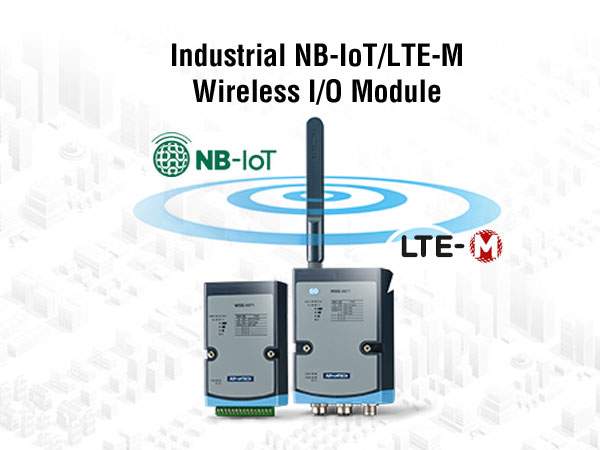
NB-IoT and LTE-M are new wireless technologies included in the 5G evolution of cellular technology standards defined by the 3rd Generation Partnership Project (3GPP). NB-IoT and LTE-M feature low power consumption and utilize LTE networks based on licensed spectrum bands. These technologies are optimized for connectivity to machines, assets and sensors in order to enable IoT applications.
AD-WISE-4671, NB-IoT/LTE-M dual-mode communication module that supports 10 communication bands. AD-WISE-4671 offers stable, low-power remote wireless transmission, a modularized design that accommodates a range of different I/O configurations, and IP65 protection that is well suited for rugged environment applications.
Offering both wide coverage and easy deployment, AD-WISE-4671 is an optimal choice for smart meters, water pumps, pipeline networks, streetlights and a range of other applications geared toward AIoT and smart cities.

Deeper and Wider Network Coverage
The coverage of NB-IoT is theoretically 20 dB stronger than traditional GPRS and LTE, offering stable reception quality

Secure Encrypted Transmission
Follows the security approaches of 4G LTE, ensuring that data is transmitted safely during communication

Lower Power Consumption
The operational life of nodes is extended by low frequency, low power consumption, and low chip complexity designs

Using NB-IoT, a new wireless communication technology designated as an international standard under the 3rd Generation Partnership Project (3GPP), AD-WISE-4671 offers data transmission rates around 100 kbps in NB-IoT mode. NB-IoT is up to 20dB stronger than traditional GPRS and LTE, providing stable reception quality even with buried lines or when underground. Both NB-IoT and LTE-M feature long distance transmission across wide area networks—making AD-WISE-4671 an ideal edge solution for applications performing remote transmission.
| AD-WISE-4671 I/O Module | AD-WISE-4471 I/O Module |
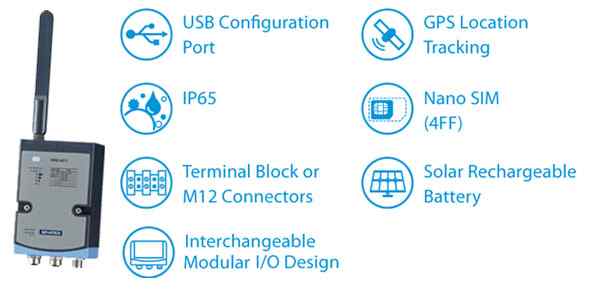 | 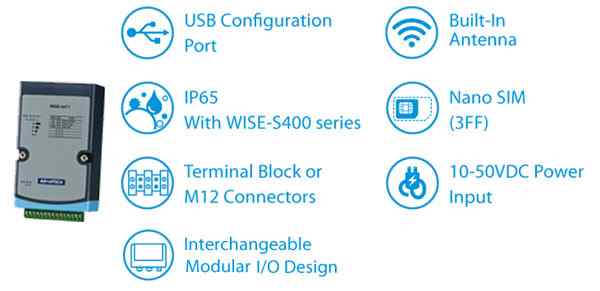 |
AD-WISE-4471/WISE-4671 follows MQTT's publish and subscribe messaging model which is ideal for low bandwidth, high latency, and data limits. Additionally, as an IoT device, AD-WISE-4471/WISE-4671 also supports lightweight protocols such as CoAP, which are suitable for small devices that are unable to communicate efficiently with limited resources.
As MQTT and CoAP are popular standards in the market, the data format can raise concern over messaging protocols. Accordingly, AD-WISE-4471/WISE-4671 also supports the LwM2M protocol which has the management interface built on top of CoAP to enable device management operations.
There is also the official publication of OMA LwM2M2 Objects and Resources to alleviate data inter-compatibility concerns. LwM2M is a protocol offering flexible and scalable device management with improved time to the market; especially for low power devices with constrained processing and storage capabilities.
Highlights:
 Automatic Connection with Cloud Pre-integration for Reducing Configuration Efforts By pre-integration with MQTT and RESTful protocols, NB-IoT nodes can integrate with cloud services automatically, reducing setup complexity for rapidly implementation. | 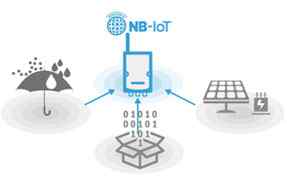 Legacy and Existing Devices to NB-IoT Diversified I/O and Communication Ports WISE-4471/WISE-4671 series offer digital I/O, 4~20-mA analog and RS-232/485 interfaces for various applications, quickly providing NB-IoT network functions to existing devices. |
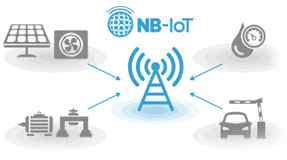 Highly Integrated Nodes for Vertical Needs Data Acquisition, Processing and NB-IoT in 1 Device Combined data collection, processing, and NB-IoT in one node, while built-in antennas, IP65 rating, and solar-powered batteries allow the nodes to operate in outdoor environment. | 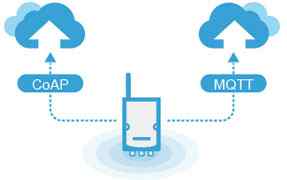 Open Connectivity for Cloud and System MQTT/CoAP and Pre-integrate Mainstream Cloud WISE-4471/WISE-4671 series support CoAP and MQTT communication protocols while continuously integrating mainstream cloud services to simplify the complexity of data integration. |
Upgrade Legacy Equipment though Cloud Management
WISE-4471/WISE-4671 Series NB-IoT sensor nodes are suitable for data collection from widely distributed stations. No complicated programming, setup, or registration are required for a fast introduction into IoT applications such as smart cities, smart water/electricity meters, and remote facility management.
| Smart Meter | Water Pump | City Pipeline Network |
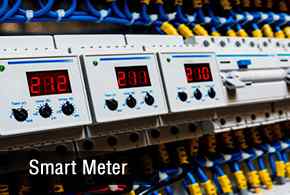 |  |  |
|
|
|